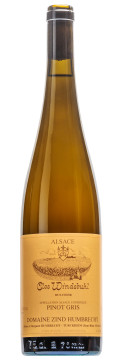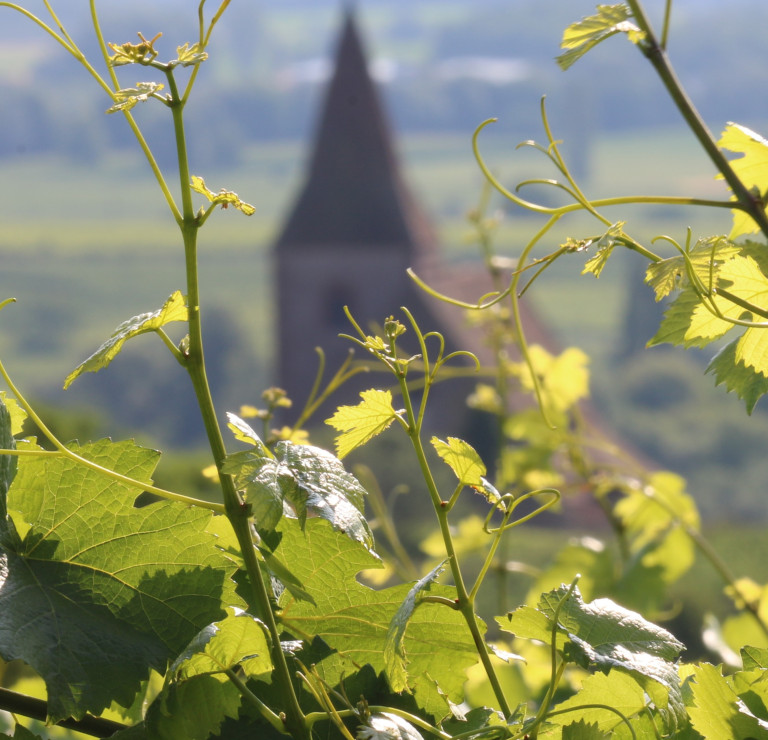
Technical presentation
| Bottling : | January 2020 |
|---|---|
| Acquired alcohol : | 14.3° |
| Residual sugar : | 6.3 g/l |
| Total acidity : | 2.7 g/l H2SO4 / (4.2g/l Tartrique) |
| pH : | 3.50 |
| Yield : | 39 hl/ha |
| Optimum tasting : | 2023-2043+ |
| Average age of vines : | 49 years |
| Terroir : | Clos Windsbuhl |
| Sweetness index : | 1 |
| Available for sale : | Yes |
| Soil : | Muschelkalk calcareous |
Description of the wine Pinot Gris Clos Windsbuhl 2018
The Clos Windsbuhl is located on the top of the village of Hunawihr on a soil type that can be found along the vineyards, especially in this area of Alsace: Muschelkalk. Here on the Windsbuhl, the top soil layers are particularly thin and the vines can reach the mother rock very quickly. Located in a late ripening climate, the warmth of the soil and south to south east exposition compensate both altitude and cooler influence from the proximity of the Vosges forest. It actually creates a unique climate explaining the style of the wines from this old historical Clos: aromatic, delicate and expressive, but also strict, racy acidity and austere. Never really powerful, their force comes more from their character than sheer power. The Pinot-Gris is the first grape variety mentioned in the history of the Clos (Tokayer), it is also today the most planted. The vines planted in the early 90s are still today declassified into a second wine (roche Calcaire), and this wine comes from vineyards planted in the 50s/60s/early 70s. Of all the vineyard the domaine cultivates in Pinot-Gris, this is probably the trickiest to harvest at the perfect sugar ripeness. The grapes seem to hide their potential and more than often we regretted not to harvest them slightly earlier. In 2018 that wasn’t the case, and the harvest conditions (very dry weather) also probably helped to keep good wild yeasts on the grapes so the wine was able to fully ferment.

Tasting notes
04/2020 : Pale yellow colour. He first nose shows the typical Windsbuhl ‘reduction’ and an almost austere tight aromatic profile. Clearly the longer full lees ageing of 18 months has closed the wine, but that’s only for now. A good decantation will slowly make the wine open up, first with toasty/smoky flavours and then more ripe fruits. This is potentially the wine that will take the longest to find its place of all 2018s, but what a potential! The palate is powerful, full flavoured, intense and a with a rich velvety texture on the finish.

The Clos Windsbuhl of Hunawihr
The altitude of the vineyard coupled with Hunawihr’s tardy climate means that the Clos Windsbuhl is often one of the last of our vineyards to be harvested. This explains the aromatic quality of the Clos’ wines and the consistent balance of acidity, a guarantee of good ageing. Although often harvested late, the Windsbuhl grapes are only rarely botryitized, doubtless due to the altitude of the vineyard, but nevertheless often reach high levels of maturity.